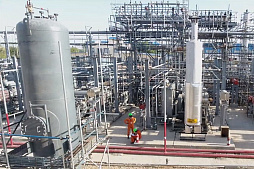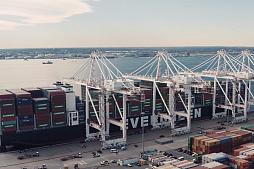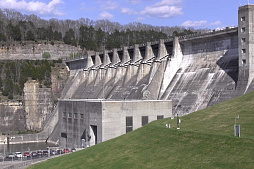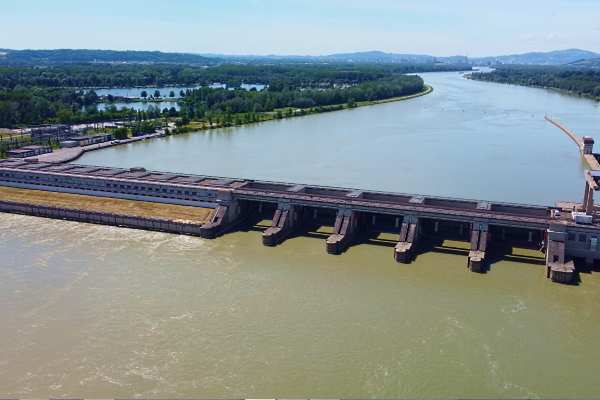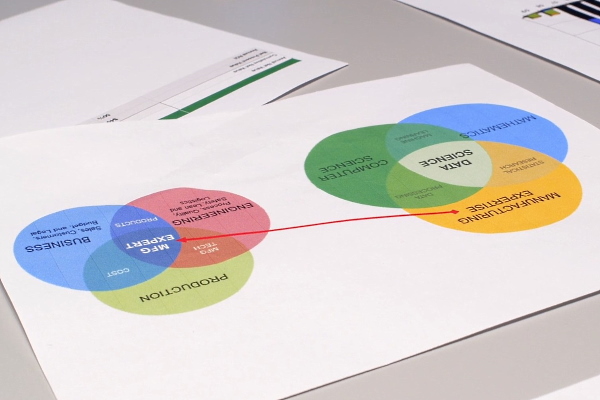To consider an application for financing, fill out the form and send it to us by e-mail along with the project brief, or contact our experts
This issue is especially relevant for large projects based on innovative technologies, which carry the greatest risk for potential investors and lenders.
Link Bridge Financial LTDA offers long-term financing for projects around the world, including loan guarantees.
We offer professional customer support at all stages of investment, including professional planning and risk management in project finance.
The concept of risk in project finance
Risk management is one of the most important elements of project management.While much attention has been devoted to describing the various types of risk in the project finance literature, the definition of risk itself has been largely ignored. In its most simplified form, risk can mean a threat to the implementation of plans.
However, such a general definition has the disadvantage that it is difficult to draw conclusions about the nature of the risk and the type of risk based on it.
In the case of investments in the securities market, the measure of risk is the dispersion of predicted or empirically observed results in relation to the expected level. A commonly used synthetic risk measure defined in this way is the standard deviation. The disadvantage of this risk measure is that it takes into account both negative and positive deviations from the expected value, in connection with which the concept of semi-deviation was introduced, which takes into account only those situations that have a negative impact on the result of the project.
Both standard deviation and semi-deviation require a large amount of data to obtain reliable results.
Due to the significant differences between individual investment projects, it is difficult to find comparable historical data that could be used to assess the risk of each new project.
The only way out in this situation is the expert method and modeling of various scenarios and their chances, as well as sensitivity analysis. The use of these methods makes it possible, for example, to compare two projects in terms of the impact of interest rate risk on the final effect of the project.
At the same time, the complexity of the projects does not allow for a deep study of all the factors that affect the final result of the investment project. There are threats here that cannot be quantified. This happens, for example, when the implementation of the project is under threat due to the lack of appropriate qualifications of management personnel. It is impossible to estimate in advance either the potential losses that may arise as a result of inefficient management, or the likelihood of such a situation occurring.
There is no doubt, that large companies need to protect themselves from such a threat, and from this point of view, this is an element of risk management.
It is assumed that a risk can be considered when the chance of an event affecting the outcome of a project is known. When this chance is unknown, we are dealing with a decision-making situation under conditions of uncertainty. However, the goal of risk management in project finance is not so much to quantify all risks, but to accurately identify areas of threat and develop effective methods to protect against them.
Based on these considerations, a general definition of risk can be adopted.
Risk in project finance can be viewed as the possibility of a situation or event that has a specific negative impact on the financial result of an investment project.
There are several implications of this definition of risk.
First of all, we are talking about the possibility, not the probability of a certain situation.
This approach not only allows the inclusion of non-quantifiable hazards in the analysis, but also has a significant impact on the risk testing methodology.
In the case of project finance, the emphasis is on qualitative rather than quantitative description of threats. Among other things, the so-called risk classification. This is a grouping of project risks into classes and a subsequent risk assessment of each risk group. If a comprehensive and unified risk classification and comparable risk measures are used, the result of the analysis will be a complete picture of the risks associated with the project.
Another distinguishing feature of risk is that it covers the possibility of only such an event that has a specific financial impact on the investment project. For example, in the case of the construction of a cement plant, the element of risk will not be a fall in demand for concrete, but a possible fall in prices caused by it. With a simultaneous decrease in the supply of gasoline on the market, factories can sell all products at a constant price, despite the decrease in demand.
Another important feature of the aforementioned concept of risk is that only those events that have a negative impact on the finances of the project are taken into account. It is not the fluctuation of the exchange rate itself that is an element of risk, but its changes, leading to a decrease in project income or an increase in project costs.
This distinguishes the concept of risk used in project finance from the simple equation of risk with variability in outcomes that occurs in many areas.
Corporate finance vs project finance
Due to the large scale of investment projects covered by the project finance, as well as the long payback periods of these investments, most of these projects are characterized by high risk.For these reasons, the rational sharing of risks among project finance participants is considered to be the most important advantage of this method of investment financing.
In the case of a traditional investment loan, the borrower is liable to the bank with its assets and thus assumes all the risk associated with the project. Both banks and other lenders, in order to minimize the risk associated with issued loans, often require collateral that significantly exceeds the value of loans issued. Thus, lenders increase their chances of getting their money back in case of failure of the investment project or financial difficulties of the debtor.
The situation is different with project finance.
Due to the scale of projects and their isolation from sponsors, the assets of a special purpose vehicle (SPV) are usually not enough to repay the debt. For this reason, lenders have to look for alternative ways to secure their financial interests.
These may be guarantees from large financial institutions or other parties involved in the project.
There are two basic forms of project finance:
• Non-recourse financing.
• Limited recourse financing.
Although one of the main benefits of project finance is to reduce the risk of sponsors, non-recourse financing in its purest form is extremely rare.
In such a case, the project proponents would only be liable to the extent of their contributions to the capital of SPV, and the lenders would bear a very high risk. For this reason, limited recourse financing is most commonly used. This provides a reasonable level of risk for lenders, which will be lower than with traditional financing methods.
Some experts mention full recourse financing, but this method differs little from traditional debt financing. Regardless of the extent to which the obligations of the project sponsors are guaranteed, the principle of risk sharing transfers some of the risk that usually falls on the project initiators to other participants.
There are three levels of risk sharing that can be distinguished here:
1. The large scale of projects implemented under project finance schemes usually involves the presence of several sponsors. By creating a separate entity in which each of the sponsors has a certain share, they share the risk associated with this project among themselves.
2. The risk is shared between the sponsors and the SPV implementing the project and the entities providing external capital. Lenders waive traditional guarantees, and are limited to project assets. Certain part of the risk associated with the failure of the project, the delay in debt repayment or the need for additional financing, is assumed by lenders.
3. Both project initiators/sponsors and lenders try to minimize their risk by transferring it to third parties. Potential risk areas are analyzed and project finance participants that have the greatest impact on minimizing a certain type of risk are identified, after which they are made responsible for managing this risk. For example, to minimize the risk of delaying commissioning, contractors must ensure that work is completed on time.
The introduction of project finance schemes is excellent for risk management, which is of great importance in the case of large investment projects, the failure of which means huge losses for both their initiators/sponsors and lenders.
Due to the isolation of the project from the structures of its initiators, it is relatively easy to identify and manage areas of potential risk. This allows companies to implement projects with a relatively high level of risk, which they previously did not dare to.
On the other hand, the additional risk to the lenders makes the project finance more expensive due to the higher risk premium.

Project finance is a method that allows such contracts to be structured on a case-by-case basis where each participant bears an acceptable level of risk.
Moreover, the rational division of risks between the most competent participants leads to a decrease in the overall risk level of the project.
For example, burdening a construction contractor with the consequences of delaying the commissioning of a building will force him to do everything to prevent this from happening. The capital provider, for example, has no such influence on the construction schedule, and therefore cannot influence the risk sufficiently.
Types of risks at different stages of the project
A large number of risks associated with projects and their diversification cause problems with classification.Depending on the purpose of the risk analysis, they can be classified according to different criteria. In PF, insured risks, bank risks, and sponsor risks are often distinguished.
While insurance risk is easy to separate, the division between bank risk and sponsor risk is highly variable. While banks try to minimize exposure to other types of risk besides credit risk, in the case of project finance they tend to take on most of the risks traditionally borne by business owners. Moreover, it is rare that only one project participant bears a certain type of risk. Typically, risks are distributed in such a way that each participant has an acceptable level of risk.
Another proposed risk classification is the separation of internal and external threats. This classification is difficult in practice for two reasons.
First, he does not clearly separate the causes and characteristics of these two groups of risks, as well as the tools for managing them.
Secondly, it causes significant difficulties in classifying certain risks.
For example, the risk of cost overruns is classified as an internal risk, but one possible reason for cost overruns is changes in regulations requiring the purchase of equipment that meets more stringent standards (external).
Groups of risks with similar characteristics can usually be minimized using similar tools, so this classification greatly facilitates the development of a risk management strategy and is an excellent starting point for further risk analysis.
Due to the complexity of risk classification in project finance, a single universal scheme has not yet been developed.
|
Classification of risks in project finance
|
||
|
Financial risks
|
Technical risks
|
Other risks
|
|
• Cost overrun • Currency fluctuations • Market changes • Project refinancing |
• Project completion • Resource depletion • Operational risks etc. |
• Political • Macroeconomic • Natural risks etc. |
This classification is used quite often, but there is no consensus among financial experts regarding a more detailed classification of risks within these three groups.
This classification covers all the most important types of risks arising from the implementation of investment projects based on project finance. It also groups risks so that appropriate tools can be selected to manage each of the identified risk groups.
It is worth mentioning the classification of risks by phases of the investment project. This is extremely useful from a risk management point of view and is often used in practice to prepare appropriate strategies for each stage of an investment project.
Project exposure to risks in different stages
The types of risks and the degree of threat to an investment project largely depend on the stage of its implementation.It is important to consider not only the types of activities performed at this stage of the project (engineering, procurement, construction, operation), but also the capital involved and its potential to generate profit.
Each project has five stages:
1. Planning stage.
2. Implementation stage.
3. Launch stage.
4. Operation stage.
5. Sale stage.
These phases are distinguished on the basis of the activities carried out in relation to the investment, but the differences between them go much further.
At different stages of the project, additional participants are involved, as a result of which the types and intensity of risks change.
At the planning stage, the viability of the project (feasibility study) is assessed. If a positive decision is made to finance the project at this stage, it is planned and its implementation begins. In order to assess the profitability of the project, a number of studies and analyzes are carried out. Based on the results of these analyzes, decisions are made on the implementation of the project, its location, technical equipment, construction method, etc.
Then the project finance is provided, contracts are concluded with the relevant contractors and other project finance participants, the project structure is developed and the distribution of powers and risks among the participants.
Numerous factors influence the success of a project at this stage.
In addition to sponsors, lenders, legal consultants, engineering consultants, suppliers and contractors who will be entrusted with the construction and equipping of facilities are joining the project.
At the first stage, contracts are usually signed with potential suppliers and consumers, as well as possible contracts for subsequent project management. In addition, it is usually necessary to obtain licenses and permits, and often establish ongoing cooperation with government agencies, including obtaining a state guarantee. Although some of the project participants are actually involved only in the subsequent stages of the project, most contracts are signed at the planning stage.
At the project implementation stage, facilities are constructed and equipped with devices necessary for operational activities.
This is the most capital-intensive stage, and usually most of the loans issued are used at this time. For large projects, the construction and equipping phase usually takes two to five years. It is especially important to consider financing risks here.
After the completion of construction, the launch stage begins.
At this time, tests of the constructed installations and equipment are carried out, which often last several months. At this stage of the project, it is important to find out if it meets the standards adopted during the planning stage. The overall risk of the project at this stage is high, not only because of the start-up of equipment, but also because the project has reached its maximum level of debt.

After completion of testing and start of operation, the project enters the operation stage.
From this moment, stable cash flows of the project begin to form, which are necessary to pay off the debt and maintenance costs.
As a rule, sponsors can make a profit after paying off the debt, although this issue is regulated differently. It should also be noted that SPV reinvests profits in the project only to the extent necessary for its proper further functioning. Thus, most of the profits are transferred to business owners in the form of dividends or through mezzanine financing instruments.
From the point of view of sponsors, projects implemented under the project finance method should have a predetermined lifespan. This is because in most cases permits and licenses are required for a certain period of time. Moreover, sponsors can withdraw their invested capital by reselling their shares in the SPV to other investors, including through public auctions. Such a decision is usually dictated by strategic considerations.
The last option is to abandon the project for technical reasons (eg, depletion of the field, depreciation of equipment) or for economic reasons (increase in costs or decrease in income, making further activities unprofitable).
Sponsors then liquidate the assets, close the SPV and withdraw the invested capital.
The liquidation of assets can be a significant expense and therefore sponsors should set aside certain funds for this purpose.
All these ways to complete the project are included in the stage of de-investment. As we can see, throughout the life cycle of a project, the risks to which it is exposed change as the type of actions of the participants changes.
The level of certain types of risks at different stages of the project is shown in the table below.
| Types of risks |
Planning
|
Implementation
|
Launch
|
Operation
|
| Cancellation of the project |
+++
|
+++
|
++
|
|
| Operational risks |
++
|
|||
| Natural resource depletion |
+
|
|||
| Management risks |
++
|
|||
| Market risks |
+
|
++
|
||
| Financial risks |
++
|
+++
|
+
|
|
| Refinancing risks |
++
|
+++
|
+
|
|
| Political risks |
+
|
+
|
++
|
+++
|
| Environmental risks |
+
|
++
|
++
|
+++
|
Modern approach to risk management in project finance
The state of uncertainty is inconvenient for all participants in investment projects.The higher the risk, the higher the probability of business failure and loss of invested funds. At the same time, there is increasing pressure from lenders to pay higher risk compensation. This increases the cost of the project, and high risk is often the reason for abandoning it.
There are many methods, schemes, models and tools to reduce the uncertainty associated with the investment process.
Basically, risk management consists of collecting and analyzing information about potential threats, and taking active steps to counter these threats.
These areas are not independent, but complement each other. Analysis of risk information allows the project team to assess whether the level of risk is acceptable or mitigation measures are needed. On the other hand, risk cannot be managed without continuous monitoring of the consequences of the actions taken. Therefore, continuous collection of risk information is essential for effective risk management in project finance.
Therefore, risk management is not a one-time activity performed during the planning phase of a project. At this stage, it is necessary to carefully analyze the risks of the project and develop ways to deal with them. At the same time, it is critical to constantly monitor the situation and adjust the risk management strategy in accordance with the changing situation.
The risk management process can be represented as follows:
1. Identification of risk areas.
2. Determining the threat posed by the different types of risk.
3. Choice of strategies and tools of risk management.
4. Implementation of the chosen strategy.
5. Monitoring and control of project results.
In a complex investment project, it is not easy to renegotiate contracts between participants, but there are a number of tools that can be used to manage risks in the investment process.
This can be, for example, additional insurance or swaps. Their number is not limited, and their use depends on the experience and qualifications of the project team. The main risk management tools in project finance will be presented below.
The template use of one tool helps to protect against any risk only in rare cases. For this reason, several options are usually used, and the risks are shared among the participants. For example, a special purpose vehicle can reduce risk by using non-combustible materials in the construction of the facility. This will reduce the threats associated with fire.
However, SPV can pass on some of the fire risk to the insurance company by purchasing a policy.
In some cases, the interests of individual project finance participants seem to conflict with the interests of the project as a whole.
For example, shifting foreign exchange risk to lenders is contrary to their desire to minimize their risk. On the other hand, banks are best prepared to work with financial instruments, so taking on the management of cash flows in various currencies is optimal from the point of view of the project, as it minimizes the likelihood of losses associated with incorrect financial decisions.

It should be emphasized that both methods of risk management, risk minimization and risk sharing, are equally important, since the main goal of risk management in project finance is to structure the project in such a way that each participant bears an acceptable risk while minimizing the risk of the project as a whole.
Project finance is characterized by a broad understanding of risk management.
Risk minimization methods include not only classical instruments, such as, for example, insurance policies, swaps or guarantees, but also all actions aimed at reducing the risk of certain situations.
This includes proper project design, hiring experienced engineers and operators, or the aforementioned use of non-combustible materials in construction.
Risk of project cancellation
The risk of project cancellation has the greatest impact on the project in the early stages of its implementation and completely disappears at the beginning of the operational phase.This risk consists in exceeding the deadlines and / or costs for putting the facility into operation, as well as in not achieving the initial plans of the project finance participants.
Lenders usually limit this risk by requiring so-called failure tests. These tests are usually designed in such a way as to test the viability of the project under extremely unfavorable conditions.
This risk is mainly borne by sponsors and contractors. Lenders try to avoid this, but must be prepared to provide additional funds in case of cost overruns. Under the principle of risk-sharing in project finance, lenders also bear the risk of longer loan repayments due to delayed commissioning of facilities or lower than expected production capacity.
The vast majority of reasons for canceling a project are technical in nature.
The exception is problems with unreliable suppliers.
However, it should be noted that suppliers work directly with contractors, and it is the contractors' task to ensure the uninterrupted supply of the necessary materials, raw materials and equipment.
On the other hand, good reasons for abandoning a project could be the negative impact of weather on construction, high inflation, or even licensing problems. All these and other events were assigned to other risk groups, which will be described below.
Some of the risk management tools are:
• Conducting detailed studies and analyzes.
• Reserving additional funds in budget.
• Selection of reliable suppliers / contractors.
• Guarantees of debt repayment provided by sponsors.
• Providing additional funding.
• Contractors' guarantees.
The risk of project cancellation poses a great threat to both sponsors and other project participants, including lenders, since it incurs real losses when the project has absorbed significant resources and has not yet generated any income.
For these reasons, many methods have been developed to manage this risk, both by minimizing it and by delegating the risk to other participants.
Risk of depletion of natural resources
This is a risk inherent in projects aimed at the extraction or processing of natural resources (mining and processing plants, quarries, mines, cement plants, etc.).Such projects are often carried out using the PF method, and therefore this risk is considered an important element of project management.
If the mineral reserves turn out to be less than predicted, there is a serious threat to the continuation of the entire investment project. Under extremely unfavorable circumstances, too small deposits can lead to a situation in which the operating profit of the project will not be enough to repay the debt.
On the other hand, the deposit may turn out to be of much worse quality than expected. This results not only in a lower sale price, but also in higher extraction costs, which can also increase the loan repayment period. Similarly, more inaccessible deposits require higher extraction costs and more time to exploit.
The risk of depleting reserves could lead to the threat of timely debt service and force creditors to reduce subsequent tranches and change the terms of financing.
In the worst case, the SPV may be unable to repay its debts as a result of unsuccessful operating activities.
The following are some of the risk management tools:
• Choosing an experienced operator.
• Conducting independent research.
• Financing flexibility.
• Sponsor guarantees.
While this risk is typical of the business activities of project sponsors, banks often take on some of this risk.
Financing projects to develop mineral deposits is a highly profitable but high-risk activity. For this reason, banks involved in projects of this type do so with the utmost care and make every effort to minimize the uncertainty that accompanies each project.
Operational risks
This is another technical risk, but it only occurs during the operational phase of the project.As already mentioned, each project phase is characterized by a different risk management strategy.
During the operational stage, collateral and most of the safeguards used in earlier phases of the project are no longer valid.
For these reasons, debt repayment depend on the facility's operating performance. Both technical (equipment failures, infrastructure problems) and economic (fuel prices), as well as organizational and other problems can affect the business.
If the production is lower than expected, the revenue is also lower, which may threaten the timely payment of the debt. Similarly, poor quality can lead to lower prices and marketing problems. On the other hand, high production costs reduce operating income, which also negatively affects the SPV's ability to service debt.
The most important reasons for operational risk include the following:
• Implementation of innovative, untested technologies.
• Errors in the design and construction of structures and devices.
• Low quality products and the use of cheap materials.
• Wear and tear of machines and equipment.
• Improper operation and maintenance.
• Low infrastructure efficiency.
In the case of project finance, this risk is very important, because projects implemented with this method are often so large and technologically complex that even experienced teams of engineers have problems with predicting threats to the proper operation of their projects.

Nevertheless, the operational risk can be reduced and shifted to other project participants.
Some tools for risk management:
• Right choice of technology.
• Selection of experienced contractors.
• Independent technological expertise.
• Contractor's guarantees.
• Sponsor guarantees.
• Investment support.
• Insurance.
Management risks
Unlike the predominantly technical risks described above, management risk is associated with poor project management, poor organization of work and production processes, and other factors such as work efficiency.This is a very large group of risks and it is difficult to predict in advance all the complications caused by them.
The main causes of management risk are, among others:
• Low qualification of project managers.
• Low work efficiency caused by lack of motivation, working conditions etc.
• Improper operation of sophisticated equipment, machines and devices.
• Improper storage of raw materials and products.
• Ineffective internal control mechanisms.
These factors can be reflected in lower production, downtime in the production process, poorer quality of manufactured goods, as well as higher operating costs.
In all these cases, the impact on the financial surpluses generated by the project will be negative.
Risk management tools include the following:
• Choosing an experienced operator.
• Project management contracts.
• Appropriate staff training.
• Financial reserves.
• Insurance.
Market risks
The concept of market risk covers a wide range of threats related to the supply of raw materials and materials and the sale of project production.This is a typical business risk and virtually all entities operating in any market are exposed to it.
In project finance, this risk has two features.
First, unlike traditional corporate finance, banks usually agree to bear some of this risk.
Secondly, the uncertainty associated with the market situation at the time of the launch of the facility is gradually decreasing.
Although this is a risk that arises from the moment the decision to proceed with the project is made, its consequences affect the project only from the moment the project starts. This does not include, for example, the risk of higher prices for materials needed for the construction of facilities. Market risk management largely depends on the specific market in which the project is being implemented.
Some risk management tools are listed below:
• In-depth market research.
• Shifting the risk to the lenders.
• Long-term contracts with suppliers.
• Long-term contracts with customers.
• Forward transactions.
• Costs control.
Financial risks
Financial risk is an integral element of any investment project.Due to the large scale of projects, high debt, and significant cash flows that accompany project finance, this risk can have a significant impact on the success of a project and its ability to repay debt.
This group includes inflation risk, currency risk, and interest rate risk. Serious threats posed by the financial risk to the project require a comprehensive analysis and development of appropriate tools to manage these risks.
These tools include, among others:
• Fixed interest rates.
• Balancing cash flows.
• Interest rate swaps.
• Foreign exchange swaps.
• Currency options.
• Forward contracts.
Refinancing risks
This is a specific group of risks, since it mainly concerns lenders, while collateral and refinancing risks can be transferred to other entities to a very limited extent.Collateral risk is a typical credit risk. Each bank carefully examines the collateral for a loan before making a decision on its issuance. However, the basis for granting a loan is the solvency of the borrower, and the collateral is only a type of guarantee for the return of invested funds in case of financial problems of the borrower.
Risk management in project finance focuses on the project's ability to repay debt with expected cash flows.
Collateral is a secondary element of credit risk minimization and is usually not of sufficient value to cover liabilities to the bank.
This can be explained not only by the nature of project finance, but also by the high specialization of investments made using this method.
Changes in the value of collateral can have many reasons, including instability of commercial law, borrower's actions leading to a decrease in the value of assets, and the situation on a given market. In practice, lenders have very little influence on the collateral risk in the case of project finance.
For example, it is impossible to force SPV, to provide more liquid assets, because the company only has limited assets needed to implement a given project.
This risk can be managed to a limited extent by the following tools:
• Collateral valuation.
• Guarantees and security system.
• Involvement of a legal advisor.

Political risks
Political risk is associated with the broadly understood powers and activities of the state and its bodies.Each investment project operates in a certain political environment, and therefore it is subject to administrative decisions and at the same time has a limited influence on the decisions of governments, municipalities or individual departments.
For these reasons, all businesses are exposed to political risk. Political risk includes those events that affect the operation of the project and may threaten financial surpluses and debt service.
Large-scale projects implemented through project finance are often of great importance to the host countries. For this reason, governments are actively involved in managing the political risks of such projects. However, government involvement is not the only way to minimize political risk.
The basic methods of managing this risk are:
• Threat analysis.
• Government guarantees.
• Involvement of local banks and businesses.
• Involvement of government agencies.
• Incorporation of international organizations.
• Risk assumption by lenders and sponsors.
• Debt repayment from foreign currency accounts.
• Political risk insurance.
Environmental risks and force majeure
The last group of risks that threaten any investment project is the risk of unforeseen impact of external forces, including environmental risks.These are threats that are beyond the control of the project participants and affect the success of the project, including natural disasters, fires, floods, earthquakes, hail, and lightning strikes.
General recommendations include the following:
• Project insurance.
• Partial transfer of risk to creditors.
• Risk taking by other participants.
Since the impact of force majeure on the project cannot be prevented, the management of this risk is focused on providing ex post coverage of losses and is very limited.
If you are interested in project finance, please contact Link Bridge Financial LTDA.
Our experienced financial team is ready to offer you customized solutions for any project, including professional risk management and consulting support from planning to the operation stage.















